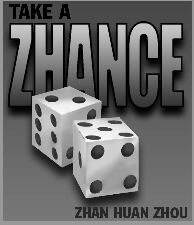
Spring 2000
Fall 1999
Winter 1999
Fall 1998
Spring 1998
Fall 1997
©2000 Zhan Huan Zhou
Updated Jan-01-2000
Please email me for comments, corrections, or suggestions.
The Right One Baby!
©1999 Zhan Huan Zhou, Fall 1999, Issue 5
The most common complaint from engineers regarding arts courses is that there is 'no right answer' to the questions. They complain that the marking is subjective and they have to BS their way to a satisfactory answer. In contrast, these same engineers always hope that they get 'part marks' for their midterm solution because even though the final answer was wrong, they used the proper method. This simple example suggests that arts and engineering may not be all that different after all.
There are some things in science that known to be fact. For example, a water molecule consists of two hydrogen atoms and a single oxygen atom. Then, there are some things that are close enough to be fact, such as Newton's infamous F = ma, which describes the everyday world fine, but fails at near light speeds. Finally, there are theories we know have no clue about whether they right, such as GUT (grand unified theory) and the superstring theory of the universe. There are also the competing theories of the origin of life, the development of modern humans, and countless other topics in the scientific community. Some of these debates even stretch over to the domain of the arts faculty. For example, the emergence of modern humans is debated in anthropology through the arts faculty. This could just as easily be discussed in a biology course offered by the science faculty.
These bounds put between faculties are completely artificial. At university, regardless of which faculty, the goal is to teach rational thinking and reasoning. Answering an essay question isn't that much different than solving differential equations. First, you read the question to understand what the exact requirements are. The next step is to consider facts, techniques, and methods that best apply to solving the problem. After that, you start the solution with the methodology established in the previous step. Each step of the solution follows logically from the previous one until finally a satisfactory solution is reached. The difference between the essay and differential equation is that a computer can tell you answered the differential equation is correctly.
When it comes to engineering, however, most problems cannot simply have a computer spit out the solution. One example is when designing a product. There is no 'correct' answer when it comes to design. It all depends on the specifications and constraints. For example, what is the best size to choose when designing a television? That depends if the goal is portability, power consumption, affordability, or some other criteria. An acceptable solution can be obtained by following the method discussed in the previous paragraph. Keeping in the spirit of this article, the method described isn't the only method and isn't necessarily the best. The exact procedure will depend on the circumstances. Maybe engineering isn't as clear cut as you thought.
When writing your finals, don't worry about the final answers. What is important is that you understand the methods used and that you used logical thinking to arrive at the answer. Coming out of university with sharp analytical skills is much more useful than being able to solve differential equations. It just so happens that in engineering, these skills are taught through mathematical and design problems. In arts, this same skill is taught by writing essays and doing presentations.
It is often described that progress does not consist of replacing a theory that is wrong with one that is right. It consists of replacing a theory that is wrong with one that is more subtly wrong. Don't get caught up in getting the 'right' answer. Just look at how wrong Newton was and how far he advanced physics.